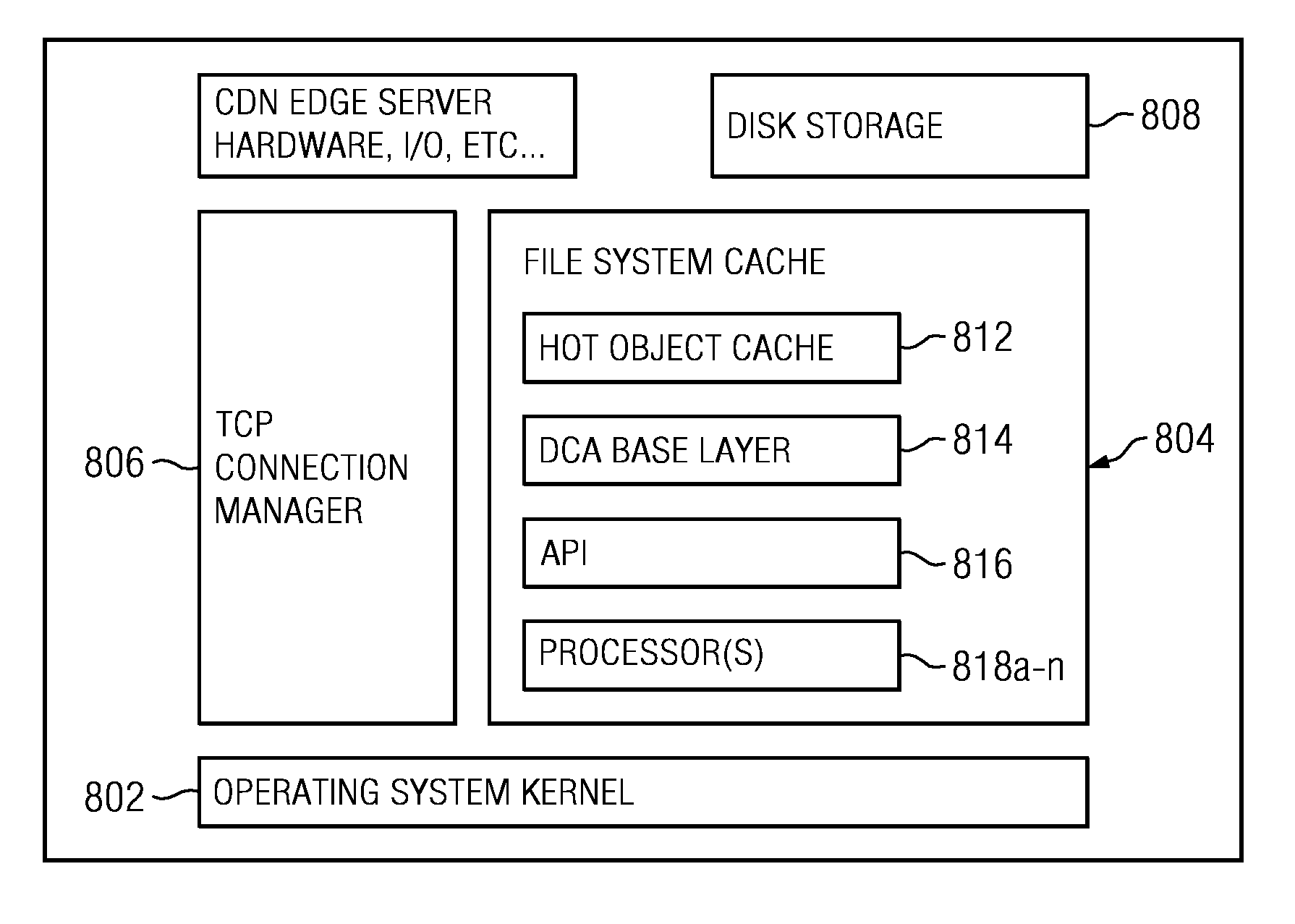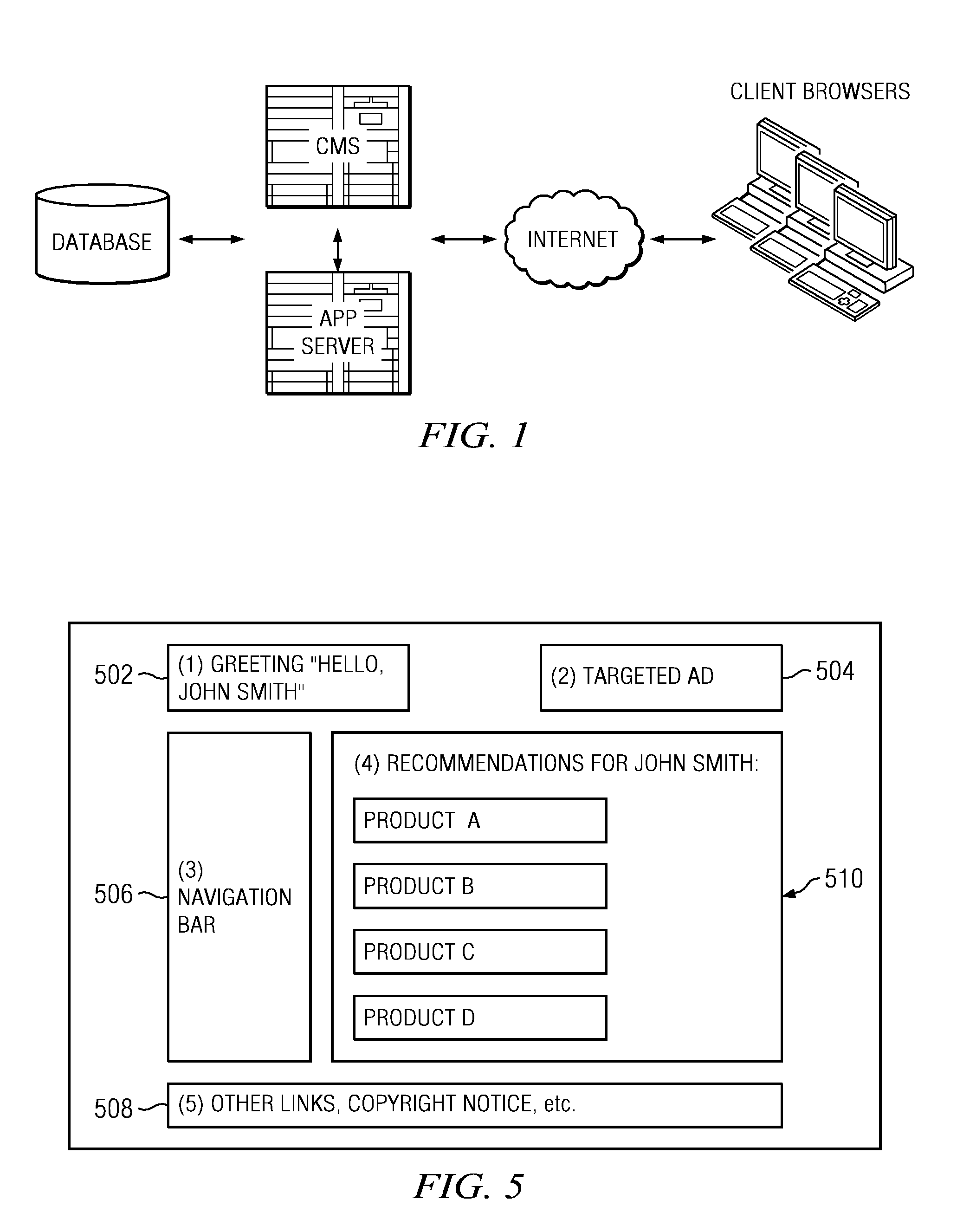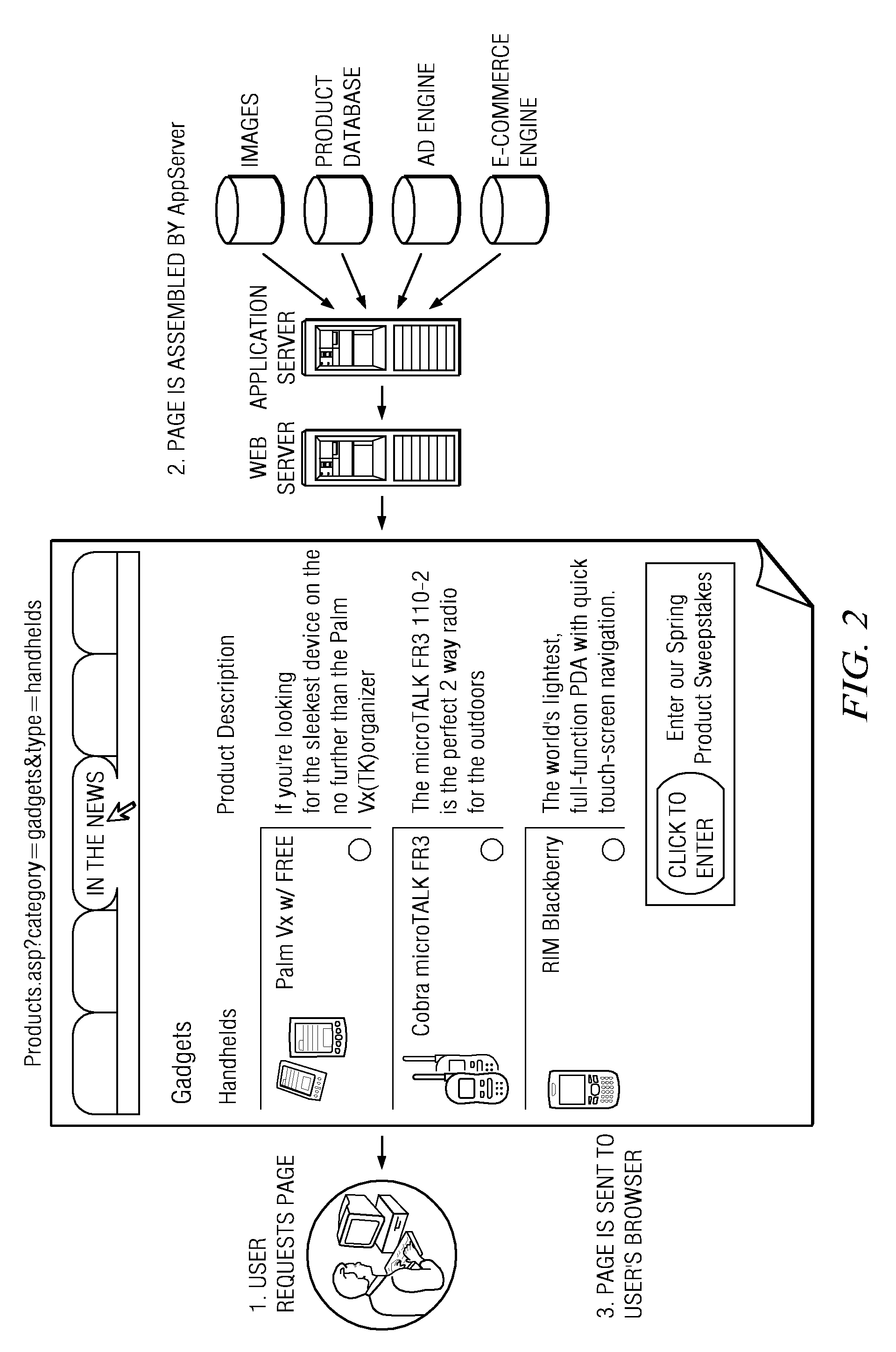Dynamic content assembly on edge-of-network servers in a content delivery network
a content delivery network and content technology, applied in the field of dynamic content assembly mechanism, can solve the problems of complex business processes that must come together to drive this new generation of online applications, are not new, and cannot be cached, and achieve the effect of improving site performan
- Summary
- Abstract
- Description
- Claims
- Application Information
AI Technical Summary
Benefits of technology
Problems solved by technology
Method used
Image
Examples
Embodiment Construction
[0028]The dynamic content assembly mechanism of the present invention leverages any server side scripting language or other server-based functionality. In a preferred embodiment, the functionality is a variant of server side include processing that is sometimes referred to as an “edge side include” to emphasize that the processing is carried out on an edge server. Traditionally, server side include languages use directives that are placed in HTML pages and that are evaluated on a server before the page is served. They provide a way to enable the server to add dynamically-generated content to an existing HTML page.
[0029]According to the invention, ESI is a simple markup language used to define the business logic for how Web page components are dynamically assembled and delivered from the edge of the Internet. More specifically, ESI provides a way for a content provider to express the business logic of how an ICDN should be assembling the content provider's pages. Thus, ESI is a commo...
PUM
 Login to View More
Login to View More Abstract
Description
Claims
Application Information
 Login to View More
Login to View More - R&D
- Intellectual Property
- Life Sciences
- Materials
- Tech Scout
- Unparalleled Data Quality
- Higher Quality Content
- 60% Fewer Hallucinations
Browse by: Latest US Patents, China's latest patents, Technical Efficacy Thesaurus, Application Domain, Technology Topic, Popular Technical Reports.
© 2025 PatSnap. All rights reserved.Legal|Privacy policy|Modern Slavery Act Transparency Statement|Sitemap|About US| Contact US: help@patsnap.com



